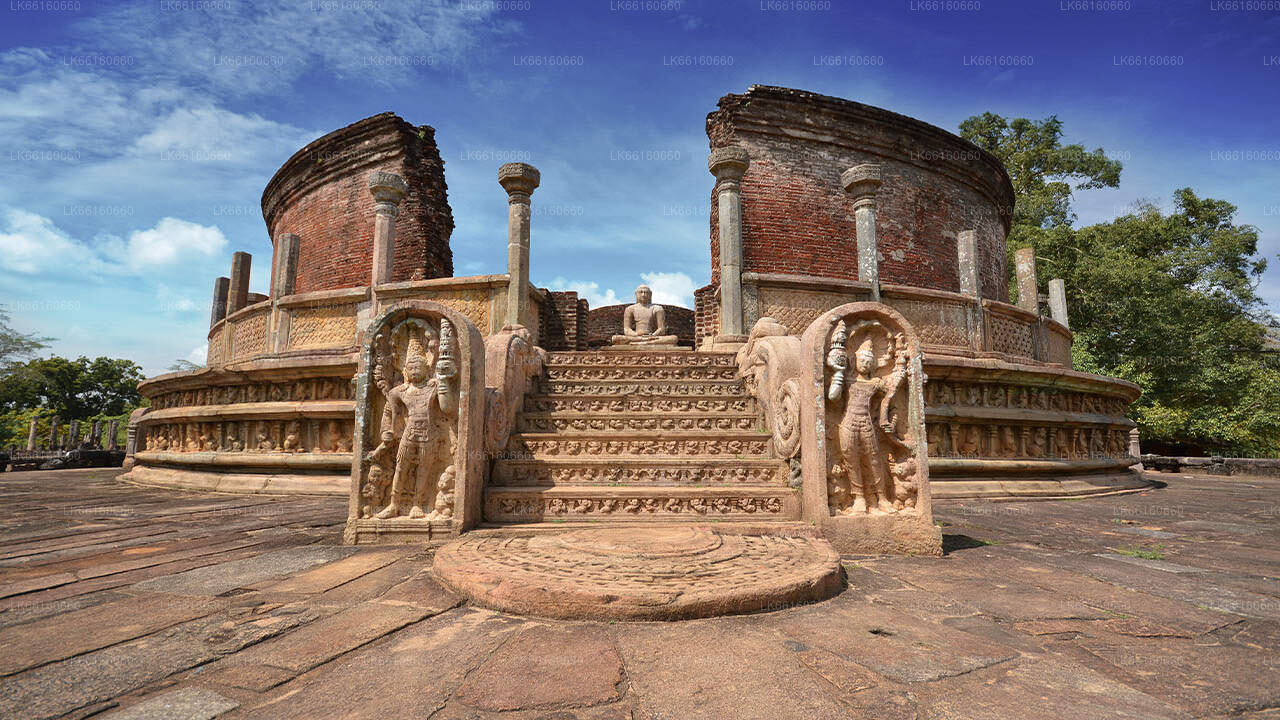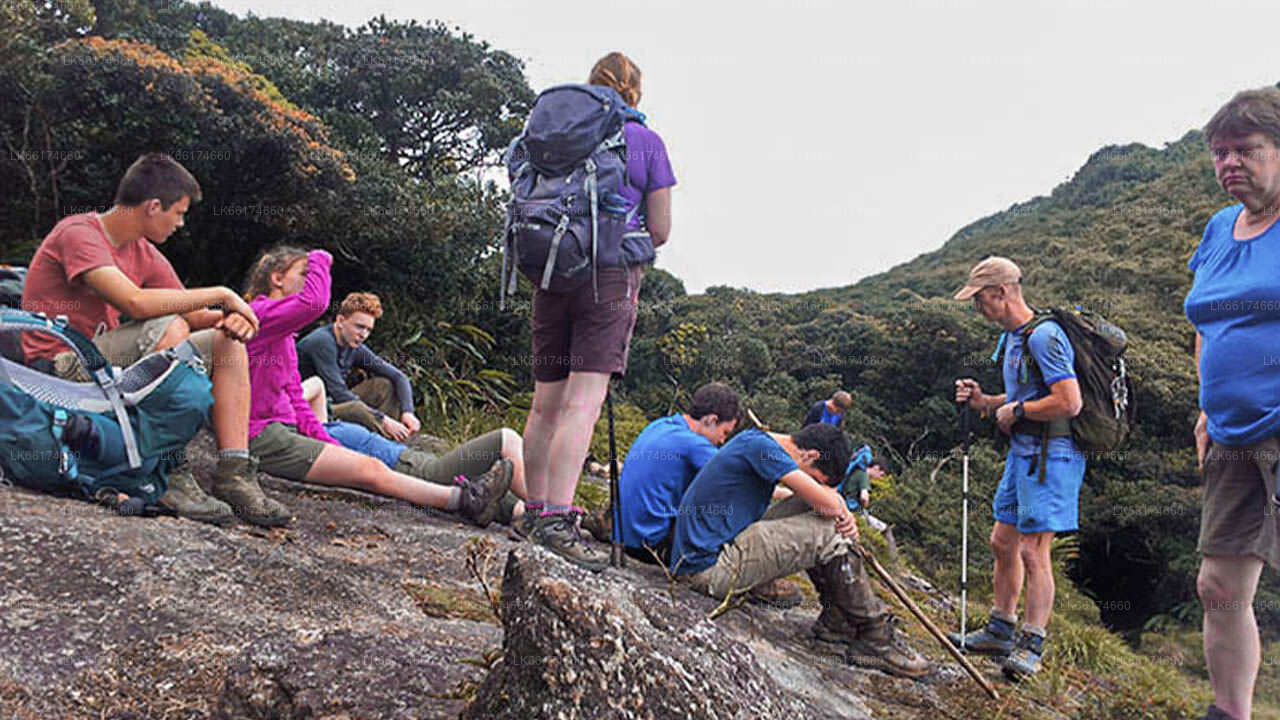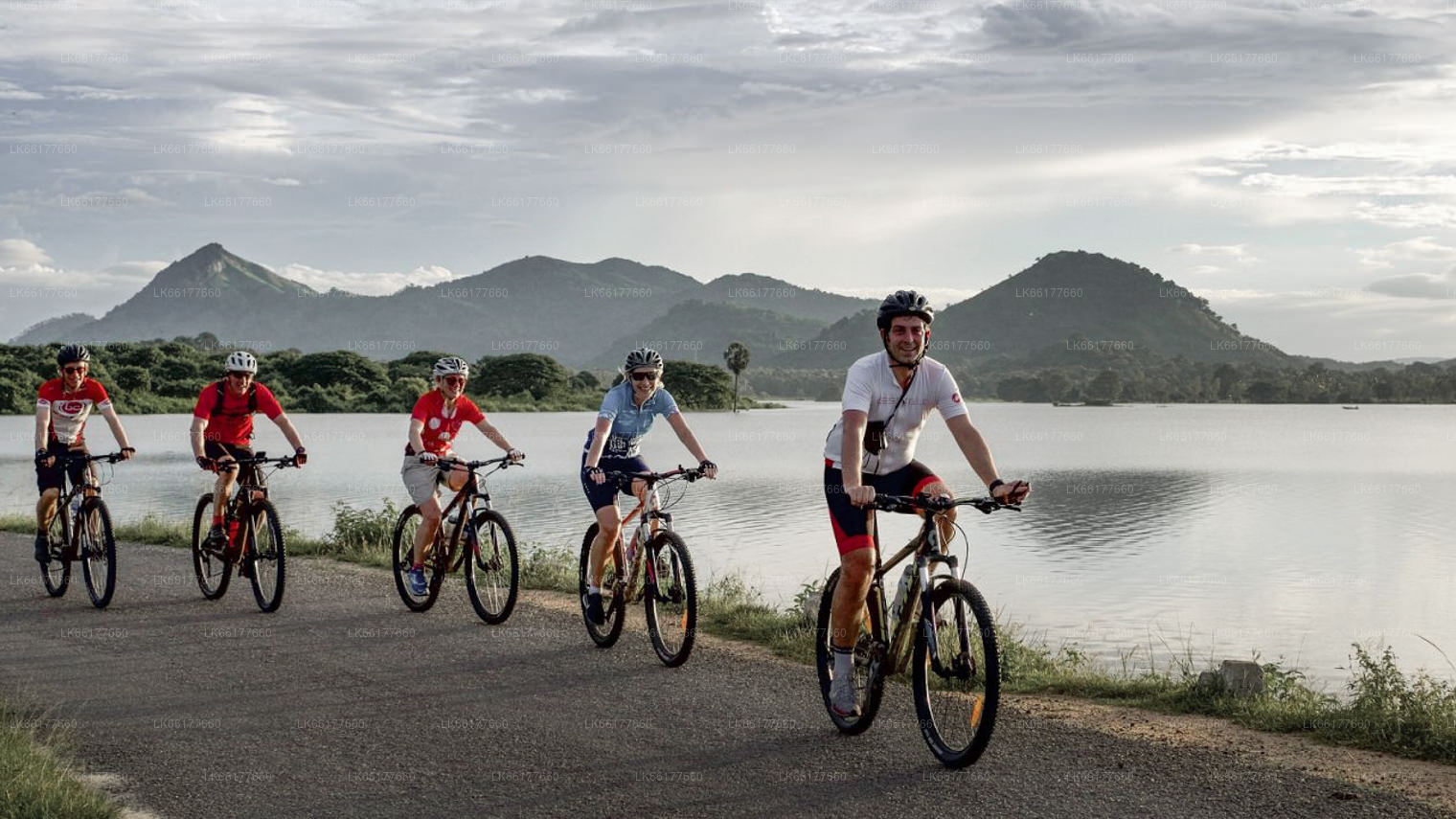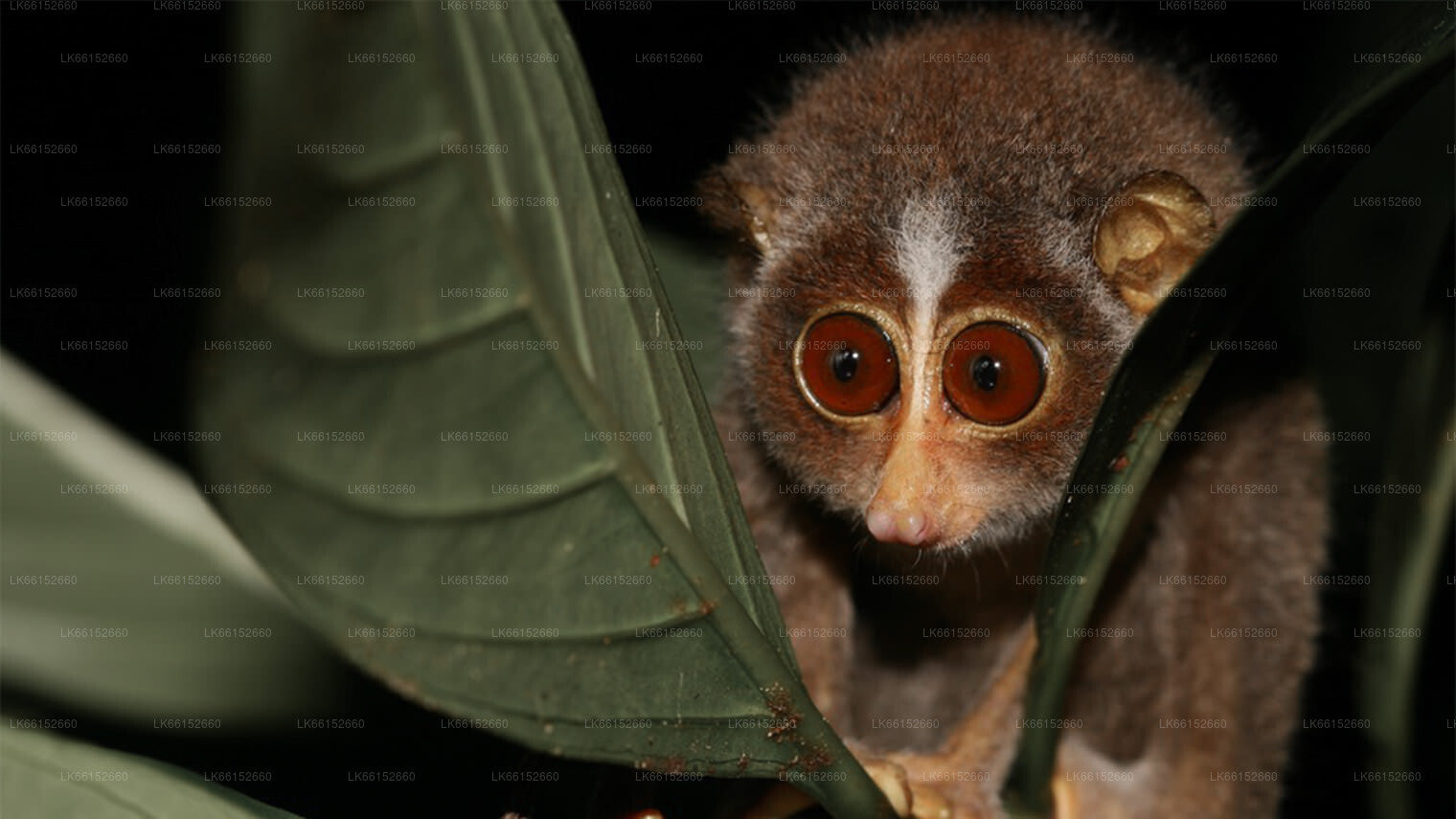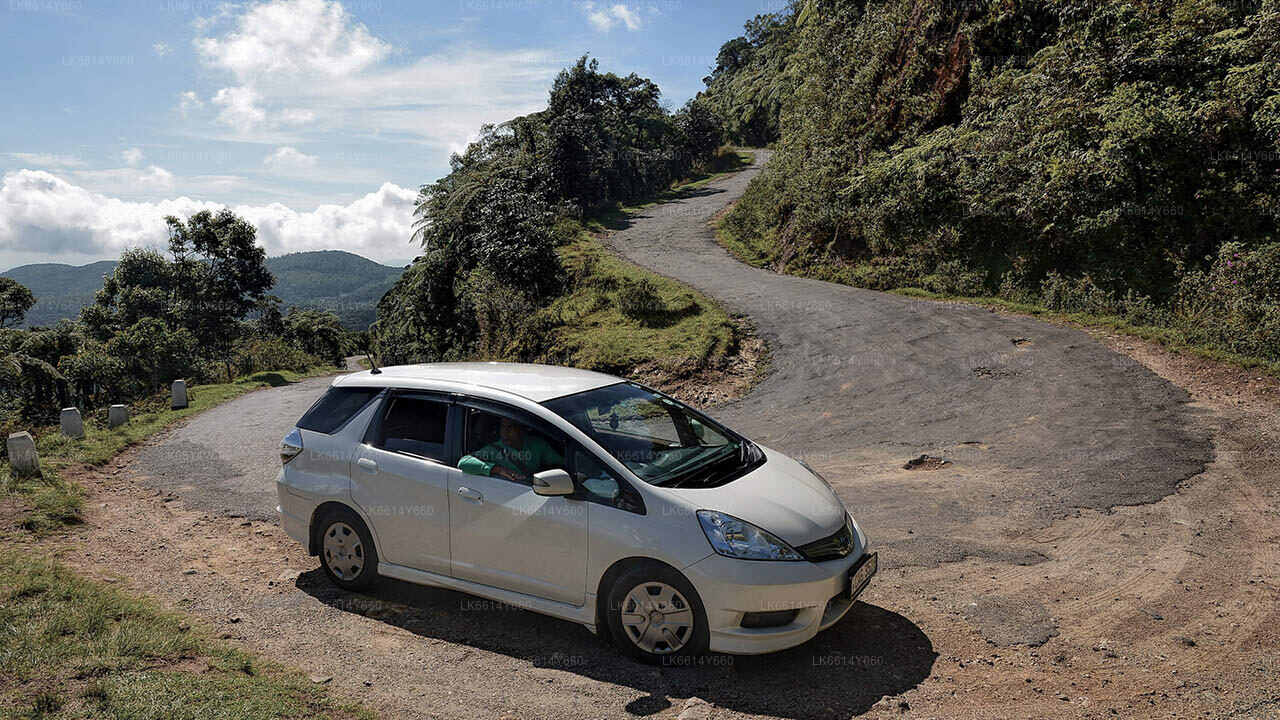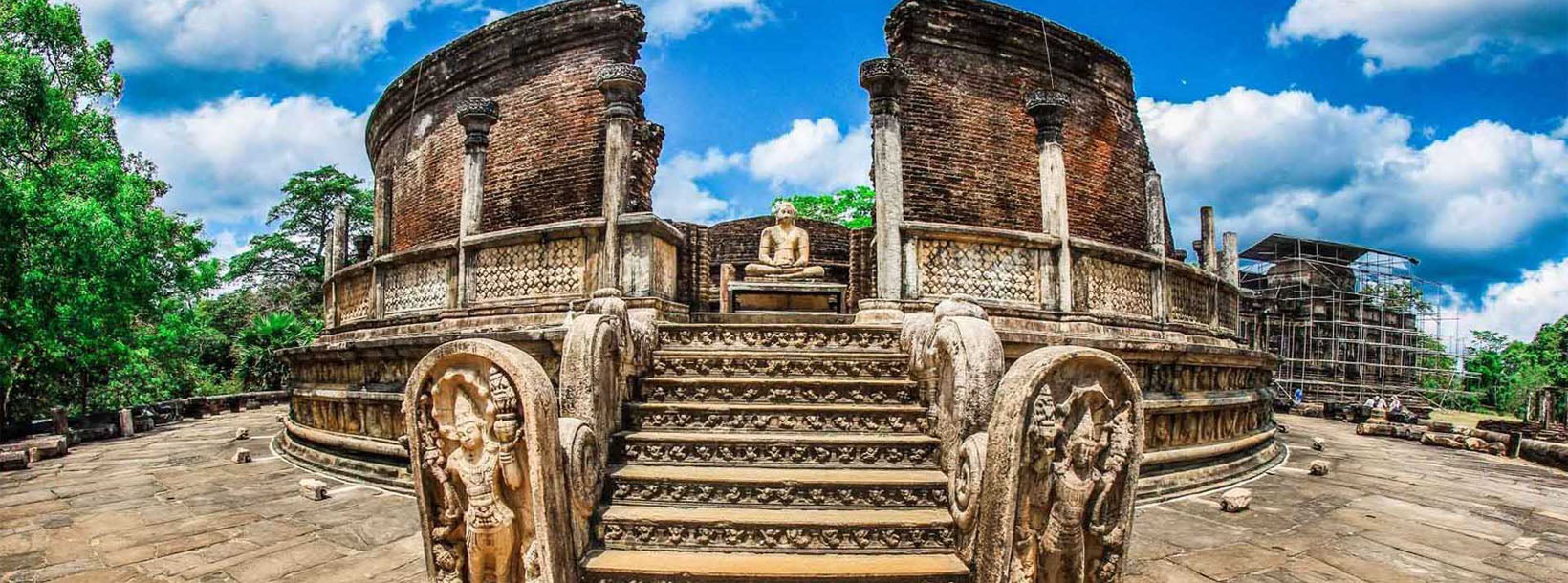
مدينة بولوناروا
بولوناروا، أحد مواقع التراث العالمي لليونسكو في سريلانكا، كانت عاصمة البلاد في العصور الوسطى (من القرن الحادي عشر إلى الثالث عشر). تشتهر بآثارها المحفوظة جيدًا، بما في ذلك تماثيل جال فيهارا الشهيرة، وتعرض عمارة رائعة تعكس عظمة الحضارة السنهالية القديمة.
Pulasthi Statue
The statue is located to the north of the city of Polonnaruwa, and close to the eastern bank of the Parakrama Samudra reservoir, which was built by Parakramabahu I himself. It is about 100 metres (330 ft) north of the ancient Potgul Vehera monastery
LocationThe statue is located to the north of the city of Polonnaruwa, and close to the eastern bank of the Parakrama Samudra reservoir, which was built by Parakramabahu I himself. It is about 100 metres (330 ft) north of the ancient Potgul Vehera monastery.
CharacteristicsThe statue was built presumably in the 12th century, during the reign of Parakramabahu I. The statue of Parakramabahu I is one of the best stone sculptures belonging to the Polonnaruwa period. The 11-foot-2-inch-high (3.40 m) statue is carved in high relief on a large boulder, with full use being made of its height. Its upper body is bare except for a single thread worn over the left shoulder.A long object is held in the hands. The statue's face carries a grave expression, with half-closed eyes, a high forehead, a long beard and a moustache. The shoulders of the statue are rounded, suggesting "extraordinary strength". The right leg is relaxed with the right knee bent forward slightly. The left leg carries the weight of the body, while the hip is also slightly inclined to the left. According to archaeologist Senarath Paranavitana, this statue is "the very embodiment of strength, majesty and dignity"
IdentityThe statue has not been positively identified, but the popular and widely accepted belief is that the statue is of King Parakramabahu I, who ruled the country 1153 to 1186. Historian Mendis Rohanadeera has suggested that the statue shows a man belonging to the Lambakanna clan, because a hare—a symbol of this clan—is depicted above the left shoulder of the statue. This supports the theory that it is a statue of Parakramabahu I, who was of the Lambakanna clan. However, another theory is that it is the statue of a sage; either Agastya or Pulasthi. The object held in the hands of the statue may be an ola (cured palm leaves) book. This, and the fact that it is located close to the Potgul Vehera, which was a library in ancient times, supports this theory. However, another belief is that the object is a "yoke of kingship".
نبذة عن منطقة بولوناروا
بولوناروا هي ثاني أكبر مدينة في مقاطعة شمال وسط سريلانكا. وقد أدرجتها اليونسكو ضمن قائمة التراث العالمي. لبولوناروا تاريخ عريق من الفتوحات والنضال، وهي تُشكل بحق العنصر الثالث في المثلث الثقافي. تقع بولوناروا على بُعد حوالي 140 كيلومترًا شمال شرق كاندي، وتُقدم لعشاق التاريخ والثقافة ساعات لا تُحصى من المتعة، بفضل ما تضمه من معالم سياحية قيّمة.
يُنسب الفضل في الكثير من الآثار المادية القائمة اليوم إلى الملك باراكراما باهو الأول، الذي أنفق موارد ملكية كبيرة على تخطيط المدن، بما في ذلك الحدائق والمباني وأنظمة الري وغيرها. تُعتبر فترة حكمه عصرًا ذهبيًا، حيث ازدهرت المملكة وازدهرت في ظل حاكم ذي رؤية ثاقبة. باراكراما سامودرا عبارة عن حوض ضخم سُمي على اسم راعيه. يعكس القصر الملكي الشهير للملك، وقاعة الاستقبال المُحاطة بأفيال حجرية منحوتة بشكل جميل، وحوض الاستحمام، القدرات الهندسية الفائقة في ذلك العصر.
نبذة عن مقاطعة شمال الوسط
تُعدّ مقاطعة شمال الوسط أكبر مقاطعات البلاد، وتغطي 16% من إجمالي مساحة البلاد. تتكون المقاطعة من مقاطعتين هما بولوناروا وأنورادهابور. تُعدّ أنورادهابور أكبر مقاطعة في سريلانكا، حيث تبلغ مساحتها 7,128 كيلومترًا مربعًا.
تتمتع مقاطعة شمال الوسط بإمكانيات هائلة للمستثمرين لبدء أعمالهم، وخاصةً في قطاعات الزراعة والصناعات الزراعية وتربية الماشية. يعتمد أكثر من 65% من سكان مقاطعة شمال الوسط على الزراعة الأساسية والصناعات الزراعية. يُطلق عليها أيضًا اسم "ويو بيندي راجي" نظرًا لوجود أكثر من 3000 خزان متوسط وكبير الحجم في المقاطعة. سري ماها بودييا، ورووانويلي سييا، وثوباراما داجيبا، ودير أباياجيري، وبولونارووا رانكوت ويهيرا، ولانكاثيلاك.









